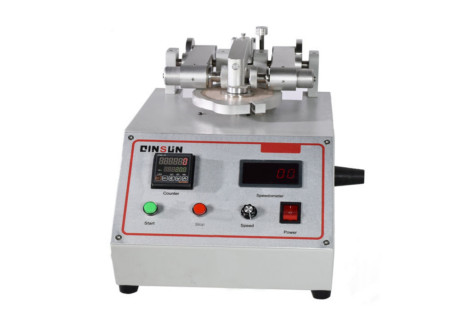- Qinsun Instruments Co., Ltd.
- Tell:+86-21-6780 0179
- Phone:+86-17740808215
- Address:No. 2578 Minhang District Gu Dai Road, Shanghai
- Contact:Mr. Li
- QQ:846490659
What is the taber abrasion procedure?

The test procedure of the Taber Abrasion Tester refers to the surface wear process of materials in the industrial field, which is a common wear phenomenon. Below I will briefly describe the general characteristics and related mechanisms of the Taber Abrasion Tester test procedure.
The Taber Abrasion Tester test procedure can consist of the following steps:
1. Initial friction stage: When two contact surfaces begin to move relative to each other, the initial contact will cause some macroscopic and microscopic deformations. This may cause some minor surface damage and loss of material particles.

2. Local deformation of the surface: As the movement continues, local deformation will occur on the surface of the material. These deformations may be the result of elastic deformation, plastic deformation, or changes in tissue structure.
3. Formation of surface microcracks: Under the action of local deformation, microcracks may appear on the surface of the material. The formation of these microcracks is mainly due to stress concentration within the material.
4. Crack expansion: Once micro-cracks are formed on the surface, external stress and local deformation can cause the cracks to further expand. This process will continue until the crack reaches a certain length.
5. Large pieces of material peeling off: When the crack expands to a certain extent, the material fragments surrounded by the crack may be completely peeled off and fall off. This results in uneven surfaces and the release of more friction dust.
This is a general feature of the Taber Abrasion Tester test procedure. It is a common process of material surface wear, which mainly consists of the initial friction stage, local surface deformation, surface microcrack formation, crack propagation and large piece of material peeling. Understanding the testing procedure of the Taber Abrasion Tester is of great significance for the research and improvement of the wear resistance of materials and engineering applications.





